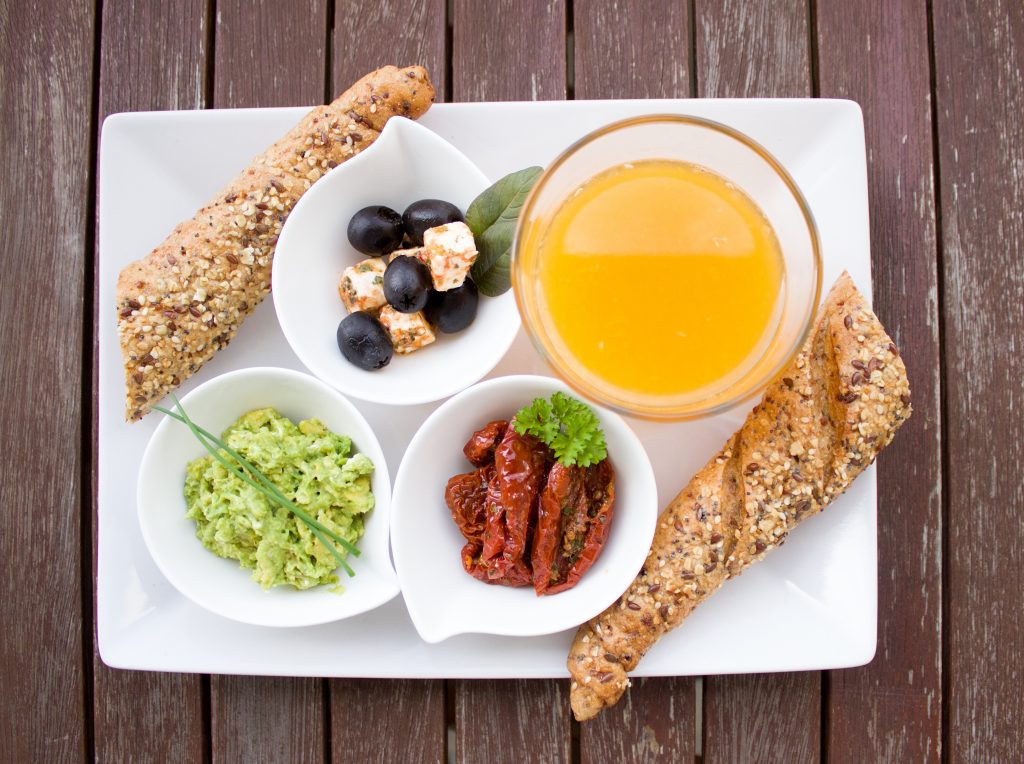Recently, I had the good fortune of attending an Islamic conference held in Indore, India. Alhamdulillah. One segment of the two-day workshop was in regards to Ramadan Preparation, and within it was a lecture by a dietitian, Dr. Nazneen, about food and nutrition during Ramadan – especially, in the summer.
The main question, she aimed to tackle was, “What to eat so that you can make the most of Ramadan? How to be energetic throughout the day? How to avoid the post-Iftaar lethargy?”
The lecture was very beneficial, and the best part was that it did not include a rather complicated diet that would make you feel faint or like you are walking on an empty stomach. So, here is an elaboration of the twenty tricks she mentioned in her lecture.
Tip #1: Drink Sattu Water/Sherbet
Sattu is a flour made of Indian cereals. If you live in India or Pakistan region, you can easily get it at a local grocery store. Indian food stores in other countries also keep them. You can also order it from Amazon. Or make it at home.
Why Sattu? Well, it is for starters a staple food used to cool down the body. High in nutrients which makes it great for Ramadan when you need energy and nutrients during long hours of fasting. A 100 gram of sattu contains 20.6% protein (and can be used as a protein shake, if one wants), 7.2% fat, 1.35% crude fiber, 65.2% carbohydrates (so you don’t get hunger pangs) and 406 calories. The fiber makes it good for digestion, so you would not feel constipated, it also detoxifies the colon of greasy, fried food and reduces acidity. Which means, no feeling like a balloon after your suhoor and iftaar. And beauty benefits that helps skin and hair.
For a recipe on how to make a delicious (and healthy) sattu sherbet, along with further benefits of sherbet click here.
Tip #2 Drink Amla Sherbet in Suhoor to Avoid Thirst Pangs
Amla or gooseberry has a list of benefits. It is easily available, rich in vitamin C and does wonders to your skin and hair. It aids digestion, detoxifies body, helps in respiration, improves heart health and I could go on for a long long while. For a full list of benefits of amla you can click here. I am sure, you will want to inculcate this little drink in your daily diet after reading the article.
In Ramadan, especially, Amla Sherbet will help you to avoid thirst pangs and keep you fresh throughout the day.
The simplest way to make amla sherbet is to add 1 spoon honey and 1 spoon amla powder in one glass of water. Alternatively, you can find a recipe to make sherbet directly from gooseberries here. (Note: Replace the sugar in the recipe with honey to make it healthier)
Tip #3 Fennel Seed Detox Water in Suhoor and Iftaar
No matter how hard we try, we cannot help but binge on fried food in iftaar. So, here is a detox water that will help you when you go out of the way with the delicious pakoras or shawarma – or biryani, or… well, you get the gist of it.
Take 500 ml of water, add 7 coarsely ground cardamom (elaichi), 2 spoons of fennel seeds and bring it to a boil. Boil the water such that only 400 ml remains in the vessel. Once done boiling, let it cool down completely. Add ice or store it in the refrigerator before consuming. (Cold water will be easier to consume than hot one)
Tip #4 Masala Chaanch in Iftaar
As tempting as drinking a bottle of soda or soft drinks would be – avoid that. Beat the heat with masala chaanch instead.
Here’s a simple and healthy recipe: take 1 tablespoon curd, 1 teaspoon dhaniya (coriander chutney) and water to your preference. Here’s a recipe for the dhaniya chutney.
Tip #5 Cinnamon Water
Cinnamon is delicious and healthy. How rare are such combinations? Cinnamon water is another detox water that can help you beat the lethargy that takes over post-iftaar. Yes, that moment when you feel like you have eaten so much that you think you can barely move. We have got you covered. Take 5 – 7 cinnamon sticks and boil it with 500 ml of water. Once boiled, let it cool down and store in refrigerator. In addition to bloating, it also helps with weight loss.
Tip #6 Avoid Food that Contains Maida or White Flour
It is tasty. It is an everyday food product. You eat it almost daily. But it is not healthy. Especially, in Ramadan, eating foodstuffs with Maida will give you acidity, digestive problems, headaches, lethargy – which not only affects your health but also your ibaadah time in Ramadan. Use alternatives of wheat flour instead.
If you want a further reading on the health effects of white flour and some alternatives to use instead. Click here.
Tip #7 Avoid Ice Creams and Soft Drinks
I know it seems hard right now. But it would be better in the longer run to avoid soft drinks entirely and not hoard on ice creams during Ramadan. Yes, you can eat ice cream. But don’t overdo it. Eat fruits instead. Lots of them. Here is an healthy alternative to fruit custard for you – which includes icecream.
Tip #8 Avoid Sweets and High Sugar Products
What is Ramadan without a dessert? I know, I understand. But high sugar products will make you lethargic and that would affect your ability to pray and do ibadah. Find healthy alternatives for desserts, use jaggery and honey instead.
Tip #9 Vegetable Paratha in Suhoor
Yes, you read it right. I said Paratha. I think after the last two tips, it was necessary to soften the blow. Make vegetable parathas using spinach and other green leafy vegetables, even potatoes (but not entirely) for suhoor. You can actually make it a day before and store it in the refrigerator and cook it suhoor to save time. It becomes a full course meal without many efforts. The fiber in flour will help in digestion and the carbohydrates will keep away the hunger pangs along with veggies providing the necessary nutrients.
Tip #10 Avoid Fried Food (Steam it Instead)
Opt for air-frying or steaming food instead of frying it. Everyone knows the problems that come along with fried food. No one is asking you to eat bland food, just avoid deep-frying. Personally, I am in love with my air-fryer, which gives the fried feel without oil. If you don’t have an air-fryer go for steaming the food or roasting it. If you must fry, then opt for shallow fry. You can also go for tandoor recipes instead of friend ones. Again, no one is asking you to give up taste and spices, just deep fries.
Tip #11 Avoid Coffee – Instead go for Green Tea
You need to be alert for suhoor, a cup of coffee wouldn’t hurt. Well, actually, it would. Caffeine will affect you because you will be on an empty stomach. Instead, opt for green tea which is a much healthier alternative. Even so, keep the caffeine limit below 300 mg during Ramadan.
Tip #12 Don’t Make it an Oatmeal Suhoor
Ramadan is here. I will be fasting the whole month. I will just eat oats for suhoor and then have an incredible weight loss. No. Oatmeal is great. But remember that they are light food and will make you feel hungrier quickly, which will make you overeat during Iftaar – making your diet goal counterproductive. So, instead, have a whole meal in suhoor that will sustain you throughout the day.
Tip #13 Avoid High Sodium Diet
This will only increase thirst and hunger. So, avoid high salty food like smoked cured, salted or canned meat, fish and poultry, frozen meats and dinners such as burritos and pizzas, salted nuts, canned beans, buttermilk, processed cheese, sauces, cottage cheese, processed mizes of rice, pasta, fries, etc.
Here is actually a great list of high sodium foods and low sodium alternatives.
Tip #14 Instead go for High Potassium
Our body cannot produce potassium, but it requires it for a variety of processes, so, it is very important to have potassium rich foodstuffs on your plate. Especially, in Ramadan. White beans, bananas, avocados, potatoes, beets, spinach, etc. are some potassium rich foods. Here is a list of potassium rich foods and their benefits.
Tip #15 Inculcate Chia Seeds or Basil Seeds in Suhoor
These seeds well up in water and form a gel like substance. The main benefit you will get from eating these (soaked and swollen seeds) is that you will not feel thirsty throughout the day as they are extremely hydrophilic in nature.
Soak chia seeds or basil seeds overnight. Add them in your favourite water based sherbet and drink along with it. Or eat them like you would eat jelly. They have a very mild taste and are easy to digest.
Tip #16 Apple Cider Vinegar in Curries and Vegetables
ACV or apple cider vinegar has become quite a pop-culture phenomenon mainly because of its health benefits like regulating blood sugar level by maintaining normal blood sugar as it increases insulin sensitivity, enhances weight loss, lowers cholesterol, skin health, blood pressure, etc. In Ramadan, it will help you mainly by reducing acid reflux. That is, helping with the burning sensation in chest that people suffer from during fasting.
If you can, drink one tablespoon of ACV or dilute the same amount in a glass of water. Otherwise, make it a habit of adding it in your spicy, salty foods and curries – one tablespoon would not affect the taste, but it would help control acidity.
Tip #17 Wheatgrass Water in Suhoor
Wheatgrass water is a great detox. It is known for helping with weight loss and healing. In Ramadan, especially, it becomes useful as it gives you energy throughout the day. For a full list of benefits and recipe of wheatgrass juice click here.
Tip #18 Lemon Water in Suhoor and Iftaar
Lemon water promotes hydration, it is a great source of vitamin C, helps with skin and hair, helps in digestion, freshens breath and aids in prevention of kidney stones. I’d advice to prepare a good amount of lemon water and store it in refrigerator. Chilled lemon water is a great alternative to high-sugar content soft drinks.
Tip #19 Opt for Brown Rice
It has a high fiber content and helps with energy. So, go for brown rice instead of a regular one.
Tip #20 Eat Gradually and Don’t Overeat
Especially in suhoor, when there is a time limit it feels like you need to eat the whole day’s worth in a limited space of time. This can have really bad effects on your health. Remember, to eat healthy food to sustain you throughout the day – the quality will matter, not the quantity. Drink water gradually and not three or four bottles at once, this will do nothing except for making you feel bloated. Use the sunnah method of drinking water. Eat patiently.
So, here were the list of tips and tricks that I found very beneficial while fasting in Sha’ban. Tell me what you think of it in the comment section below. And also feel free to contact if there are any queries.
May Allah help us through Ramadan, purify our intentions and accept our Ibadah from us. Aameen.
Links Referred in the article:
[2] https://www.bookbaak.com/make-sattu-flour-home/
[3] https://food.ndtv.com/food-drinks/sattu-sharbat-the-desi-summer-cooler-you-must-try-1692135
[4] https://juicing-for-health.com/health-benefits-of-amla
[5] http://foodviva.com/chutney-raita-recipes/green-chutney-recipe/
[6] https://www.practo.com/healthfeed/maida-white-flour-is-it-really-good-for-our-health-24419/post
[7]
[8]https://www.ucsfhealth.org/education/guidelines_for_a_low_sodium_diet/
[9] https://www.healthline.com/nutrition/high-potassium-foods#section10
[10] https://www.thesuperfoods.net/wheatgrass/how-to-make-wheatgrass-juice



